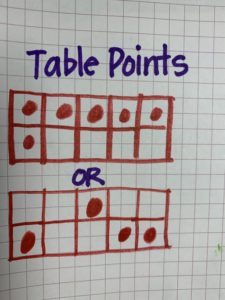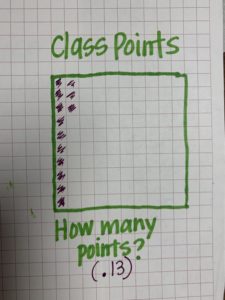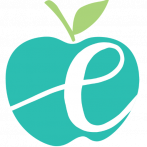
23 Jan 5 Ways to Increase Number Sense Throughout Your Day
“My kids don’t have number sense!”
I hear this all. of. the. time.
John SanGiovanni says it well:
“It’s the perfect problem. It isn’t a standard. It isn’t a problem or a lesson in your textbook.”
Although it isn’t those things, it is at the root of all the math learning and teaching we do, making it the perfect problem. We all need it, yet there isn’t a direct way to teach it. The National Council of Teachers of Mathematics (NCTM) define number sense as follows: “Number sense refers to a person’s general understanding of number and operations along with the ability to use his understanding in flexible ways to make mathematical judgments and to develop useful strategies for solving complex problems (Burton, 1993; Reys, 1991). I’d like for us to focus on term flexibility. It’s a child’s ability to work flexibly with numbers that build number sense.
Number sense isn’t something we teach. It’s something we build. We build it through continuous, daily efforts. There is a lot to learn about number sense, but I’d like to encourage us to find small ways to fit in building number sense throughout your normal instructional day. My disclaimer is: OF COURSE, there is more to number sense than these suggestions. NO, this isn’t enough to build number sense. My goal is that we capitalize on the small, typically missed opportunities. And YES, if you are complaining about the lack of number sense then it is up to YOU to start doing something about it.
- Behavior Management: We all have our own systems for this. Whether individual students are on sticker behavior charts, or you do a class system, they are very popular. One system I see used fairly often is a point system of some sort. Consider:
- Organizing your table points into five groups. Avoid the tally system as it is not as easy to subitize the tally marks as it is if you filled in ten frames. If you are a 1st-grade teacher, for example, each table could have a ten frame on the board. As they collected points, they would fill in their ten frames. EVERY. TIME. kids look at their table points they are thinking about ‘how many more’ until they fill up their frame for their reward. Thus, they are thinking about the partners of ten all day long. They are using subitizing ( the ability to group objects in ways that allow you to ‘see’ the number easily). Many number talks use ten frames and ‘quick look’ cards to have students identify the number of dots and then teachers capitalize on ‘how do you know?’ These questions are critical in developing number sense. Here is a protocol for quick look cards you could follow for questioning when students earn new table points. You could give the points and with only 30 seconds say, “Turn and tell your table how many points Table ___ has and how you know. How many more do they need?”
- Mix up how you present the numbers. Putting the points in a ten frame traditionally (fill up the five first, then the bottom five) is a great way to start. Once students can quickly identify these, then start giving points in different parts of the ten frame.

- Upper-grade levels can choose to fill in a ‘hundreth’s’ grid instead of a ten frame. How close are we to the next tenth?

- Finding page numbers. Oh good golly it is painful to watch students who struggle with number sense find page numbers. You know this is a concern when you ask students to turn to page 176 and they start with page 1– and go page by page. This is a magnitude comparison issue. These students are still unclear as to how far or close a particular number is, ‘about’ how many pages that is, etc. So, try:
- Say the page number.
- Have students say the page number.
- Write the page number (so many of our students aren’t hearing the right number words, especially our language learners). Write it in numeral form.
- Say, “Quick, stand up and finger flash!” A finger flash is a quick kinesthetic way to build a number by tens and ones. For reasonably sized numbers, students ‘flash’ their tens on their left and their ones on their right. You can see a video below (finger flashing starts at 2:35).
It would go something like this.
“Class, turn to page 96.”
The teacher writes the number on the board (always a good idea).
Class say the number with me, “96.”
Stand up and let’s finger flash 96. Class stands.
(to the left) 10, 20, 30, 40, 50, 60, 70, 80, 90..(to the right) 91, 92, 93, 94, 95, 96.
“Boys and girls, 96 has 9 groups of ten.., turn to page 96.” Teachers are watching students estimate about 90 pages, or groups of ten pages before they count by one page at a time.
3. Secret Number/ Call & Response. Try writing a number (upper grades consider even decimals, fractions, etc.) on an index card. As students enter the room, you show each child the number. Students have to do various things with what is on the card before they are allowed to enter the room, exit the room, line up, get started with seat work, etc. You decide when they have to give the ‘secret number.’ As you show the card, students may have to:
- Whisper the number to you. Just reading numbers is an important skill and we don’t have students read numbers aloud often enough. “seventy-six” or “four and 36 hundredths”
- Expand the number. “76 is 7 tens and 6 ones” “4.36 is four ones, three tenths, and 6 hundredths.”
- Tell me partners of the number. 76 = 30 + 46. 4.36 is 2.30 + 2.36
- Tell me the number before and after this number. 74, 77. 4. 35 and 4. 37.
- Tell me ten more or ten less etc.
Students can do these individually as he/she enters the room, or the class can choose one and they say it as a call and response chorally. The teacher says, “76” to get kids’ attention. Kids say, “70 +6 is 76.”
4.Transition Counting. Kids WANT TO TALK. Let’s give them the chance to talk but make it productive and timed. I talk about transition counting in this post and give you access to a printable of other math transition activities. Essentially, each time you have students transition (ie. from the carpet to their seats, from their seats to line up, etc.) give them a number to count by that is appropriate for your grade level. Maybe you count by 10’s off decade (count by tens starting at 13 and ending at 83) or by fractions (start by 1/4 and end by 3 wholes). Giving students a starting number and an ending number will give them a time frame to travel. All students must count aloud and they must get to their destination by the time the class reaches the end count. Kids move, get to talk, transition efficiently, and are practicing counting. It is a win-win.
Each of these ideas is about being more intentional with the things we are ALREADY doing.
How else can you adapt these to fit your needs/ grade level? What else can we do to enrich our daily activities with number sense? I’d love to hear from you!



Barb McMahon
Posted at 15:13h, 27 JanuaryLove, love, love these ideas! Thank you!!
Lisa Boerner Berends
Posted at 16:06h, 27 JanuaryThank you for your ideas and inspiration! Useful and easy to implement!
Rebecca A Gutierrez
Posted at 16:35h, 10 FebruaryThanks Shannon, I will definitely be stealing some of these ideas to share with the teachers I work with! Keep the great ideas flowing!
skiebler
Posted at 20:12h, 10 FebruaryThanks for the feedback, Rebecca, and let me know what other creative ideas this sparks!